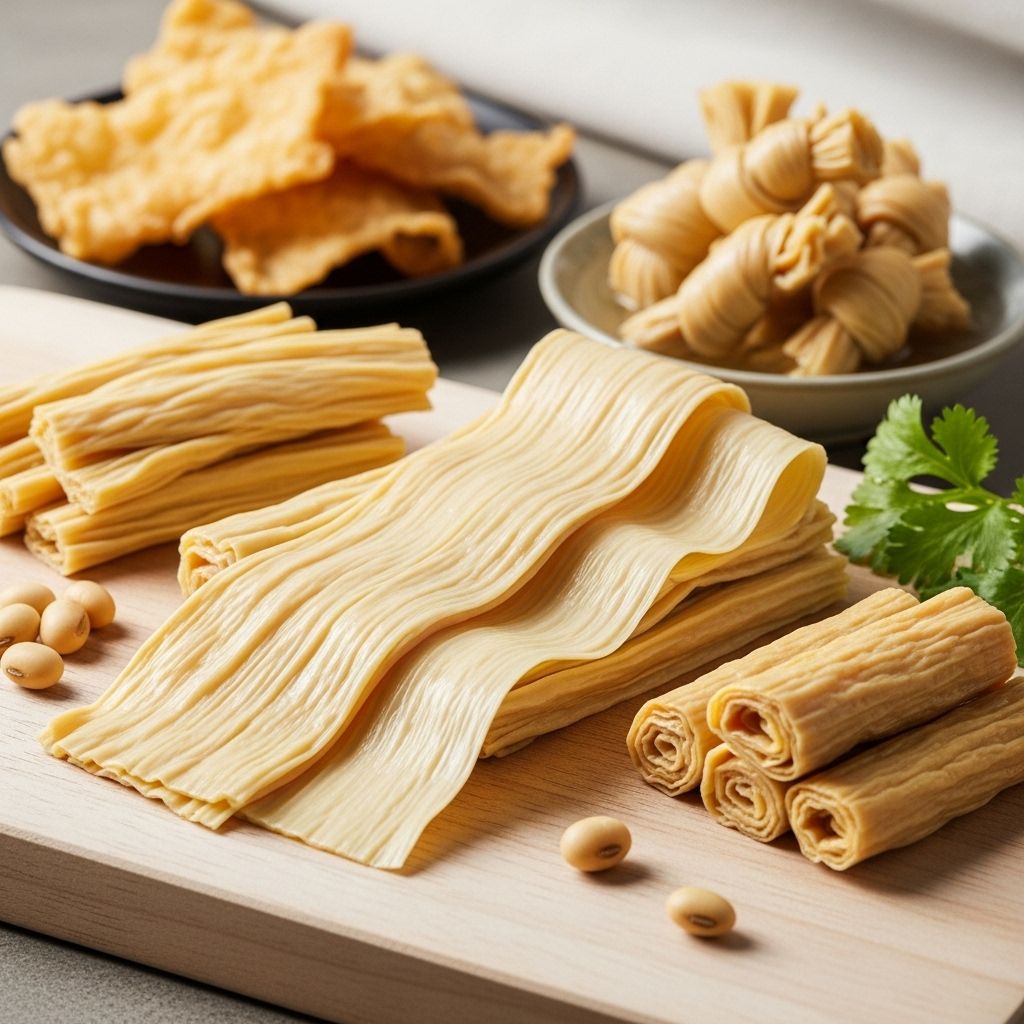Discovering Yuba: The Flavorful Bean Curd Skin
Exploring the Benefits and Uses of Yuba

Table of Contents
- What is Yuba?
- History of Yuba
- Benefits of Yuba
- Uses of Yuba
- Taste of Yuba
- Frequently Asked Questions
What is Yuba?
Yuba, also known as bean curd skin or tofu skin, is a food item made from soy milk. It is created when soy milk is heated in a shallow pan to around 80–90 °C (176–194 °F), forming a thin film on the surface. This film, composed primarily of a soy protein-lipid complex, is carefully removed and dried to produce the yuba.
History of Yuba
The use of yuba was first documented in written records during the sixteenth century, with references appearing in both China and Japan. In China, it was mentioned in Li Shizhen’s Bencao Gangmu, completed in 1578 and published in 1596. In Japan, it was noted in Matsuya Hisamasa’s diary, Matsuya Hisamatsu chakai-ki, in 1587.
Yuba is believed to have been introduced to Japan from China by a Zen monk in the 13th century, and it is considered a delicacy in Kyoto, where it is known as yuba. The high-quality water in Kyoto is essential for producing yuba, making it a signature element of local cuisine.
Benefits of Yuba
Yuba is rich in protein and has a savory, umami flavor, making it a nutritious addition to various dishes. Here are some of its key benefits:
- Protein Content: Yuba is a concentrated source of soy protein, making it an excellent option for vegetarians and vegans.
- Low Calorie Count: It is low in calories and can be part of a weight management diet.
- Rich in Umami Flavor: Yuba’s umami taste enhances the flavor of dishes, making it a versatile ingredient in cooking.
Uses of Yuba
Yuba can be consumed fresh, fermented, or dried, and it is used in various cuisines, including Chinese, Japanese, and Korean cooking. Here are some ways yuba is used:
- Fresh Yuba (Nama Yuba): Often served like sushi, dipped in soy sauce and grated ginger, highlighting its delicate flavor.
- Dried Yuba: Used in soups, stews, or as a snack. It can be rehydrated by soaking in water or broth.
- Fermented Yuba: Adds a tangy flavor to dishes and is used in traditional fermented foods.
Taste of Yuba
The flavor and texture of yuba are highly prized for their delicate, ethereal quality. When consumed fresh, it has a tender and rich texture. The taste is often described as savory and umami, making it a popular ingredient in both traditional and modern recipes.
Frequently Asked Questions
Q: What is the difference between yuba and regular tofu?
A: Yuba is made from the skin that forms on soy milk when heated, whereas regular tofu is made by coagulating soy milk with a coagulant like calcium sulfate or magnesium chloride.
Q: Can yuba be made at home?
A: Yes, yuba can be made at home by heating soy milk in a shallow pan and carefully removing the skin as it forms. However, it requires patience and skill to produce high-quality yuba.
Q: Is yuba suitable for vegetarians and vegans?
A: Yes, yuba is suitable for both vegetarians and vegans as it is made from soy milk and does not contain any animal products.
References
- https://en.wikipedia.org/wiki/Tofu_skin
- https://savorjapan.com/contents/discover-oishii-japan/what-is-yuba-the-history-and-method-behind-japanese-tofu-skin-and-where-to-try-it-in-kyoto
- https://andreanguyen.substack.com/p/what-is-tofu-skin-yuba
- https://kids.kiddle.co/Tofu_skin
- https://www.uwajimaya.com/uwajipedia/yuba/
- https://www.soyinfocenter.com/books/159
- https://www.soyinfocenter.com/HSS/yuba.php
Read full bio of Sneha Tete












